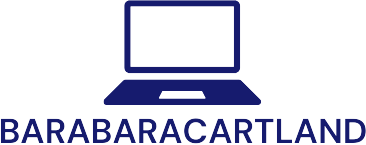Table of Contents
ToggleIn a world where learning often feels like deciphering ancient hieroglyphics, whole language learning emerges as the fun-loving superhero of education. It champions the idea that language isn’t just a collection of vocabulary words and grammar rules; it’s a vibrant tapestry woven from context, meaning, and real-life experiences. Imagine diving into stories that whisk you away to far-off lands while picking up new words like they’re candy at a parade.
This approach invites learners to embrace reading and writing as natural, enjoyable processes rather than tedious tasks. With whole language learning, students don’t just memorize; they engage, explore, and even giggle a little along the way. So if you’re ready to transform the way you or your child approaches language, it’s time to discover why whole language learning might just be the key to unlocking a lifelong love of literacy.
What Is Whole Language Learning?
Whole language learning is an educational philosophy that focuses on language acquisition through meaningful context. This approach emphasizes the integration of reading, writing, speaking, and listening, making them interconnected experiences. When learners engage with real-life texts, they develop a deeper comprehension of language structures and vocabulary.
Students explore themes and subjects that resonate with their interests, promoting genuine engagement. Authentic materials, such as books, newspapers, and online articles, create opportunities for learners to connect to the world around them. By experiencing language in context, learners cultivate critical thinking skills and a love for reading and writing.
Emphasis on exploration fosters creativity. Classroom activities often include storytelling, collaborative writing projects, and interactive discussions, encouraging students to express themselves freely. Feedback from peers and teachers enhances this process, allowing learners to refine their skills in a supportive environment.
Assessment within a whole language framework incorporates various methods, such as portfolios and observations, rather than standardized tests. This holistic approach recognizes individual progress and growth. Flexible assessments show students’ abilities to use language in real-world situations and encourage continuous improvement.
Overall, whole language learning transforms the educational landscape, shifting the focus from rote memorization to active participation. This method cultivates a positive attitude toward literacy, helping students develop lifelong skills.
Principles of Whole Language Learning

Whole language learning centers on principles that enhance literacy acquisition through engaging methods. The approach nurtures a love for reading and writing, establishing a solid foundation for language skills.
Meaningful Context
Contextual learning serves a crucial role in whole language education. Engaging with authentic texts like novels, articles, and poems immerses students in the language. Such materials connect learning to students’ interests and experiences. Including real-world applications helps learners see the relevance of language in their daily lives. Exploring themes relevant to personal backgrounds fosters deeper comprehension and retention. Utilizing engaging tasks promotes joy in reading instead of viewing it as a chore.
Student-Centered Approach
A student-centered approach highlights individual interests and strengths in the learning process. Learners actively participate in discussions, share ideas, and collaborate on creative projects. Teachers serve as guides, facilitating experiences that empower students to take ownership of their learning. Encouraging choice in reading materials and writing topics motivates students to engage more deeply. Peer feedback enhances collaboration, allowing students to refine their skills in a supportive environment. Whole language learning prioritizes this active involvement, cultivating confidence and fostering a lifelong love for literacy.
Benefits of Whole Language Learning
Whole language learning offers numerous advantages that contribute to a student’s overall development. This approach nurtures a love for language and literacy, making education more enjoyable and effective.
Enhancing Engagement
Engagement increases when students interact with authentic texts. Reading real books and articles that connect to their interests fosters enthusiasm for learning. Enjoying literary experiences creates a sense of ownership in students. Participation in collaborative projects allows for exploration of personal ideas and creativity. Discussions about texts promote communication skills and build confidence. As students relate learning to their lives, they become motivated to read and write more frequently. Overall, engagement in whole language learning creates a vibrant and dynamic classroom environment.
Promoting Critical Thinking
Critical thinking flourishes in a whole language learning context. Students analyze, synthesize, and evaluate information rather than memorizing facts. Teachers encourage questions that stimulate inquiry and exploration of ideas. By discussing different themes and perspectives, students develop a broader understanding of the material. Engaging with diverse texts challenges students to think independently and creatively. This approach also fosters collaboration and peer-to-peer feedback, enhancing problem-solving skills. Whole language learning cultivates a mindset that values curiosity and reflection, essential traits for lifelong learning.
Challenges of Whole Language Learning
Whole language learning presents several challenges that educators frequently encounter. Addressing these challenges ensures effective implementation of the approach.
Misconceptions and Resistance
Educators sometimes face misconceptions about whole language learning. Some believe it lacks structure or rigor, resulting in resistance from traditionalists. Doubts about its efficacy can hinder its adoption, particularly in environments focused on standardized testing. Misinterpretations may also lead to an oversimplified view, where the depth of engagement and understanding is overlooked. The emphasis on context and meaningful experiences often gets dismissed, preventing teachers from recognizing its potential benefits. Shifting these perceptions requires comprehensive professional development, allowing educators to explore its advantages through evidence-based practices.
Implementation in Diverse Classrooms
Implementing whole language learning in diverse classrooms presents additional challenges. Teachers must consider varying language proficiencies, learning styles, and cultural backgrounds. Inclusivity is essential, as some students may require tailored approaches to fully engage with the material. Resource availability can become a barrier, particularly in underfunded schools where authentic texts might be limited. Collaboration between educators can foster innovative strategies, promoting shared practices that accommodate diverse needs. Strategic planning that includes differentiation ensures all students benefit while cultivating a rich, inclusive learning environment that reinforces whole language principles.
Whole language learning offers a refreshing alternative to traditional educational methods. By prioritizing meaningful context and student engagement, it transforms literacy into an enjoyable and enriching experience. This approach not only fosters a love for reading and writing but also develops critical thinking and communication skills essential for lifelong learning.
Despite the challenges educators may face in implementing whole language principles, the potential benefits for students are significant. With the right support and resources, teachers can create inclusive environments that cater to diverse needs and learning styles. Embracing whole language learning can ultimately lead to a more dynamic and effective educational landscape, where students thrive and develop a genuine passion for literacy.




